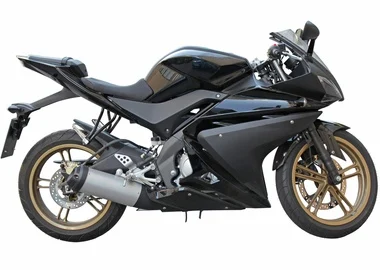Can’t wait to ride full throttle along those empty, winding roads in the Canadian wilderness? No wonder. In case you haven’t yet considered how to import your motorcycle to Canada, definitely check this ultimate guide on UK to Canada motorcycle transport and shipping services. From preparations, through paperwork and transport options, to cost analysis – we’ve got all the information you need on how to export your motorcycle safely and legally. With years of experience and countless delivered shipments, we know the ins and out of the business.
How to prepare a motorcycle for shipping to Canada?
Considering that motorcycles are qualified as dangerous goods, transporting them as part of international shipments is strictly regulated. As such, you will have to make the necessary preparations before despatching it to Canada. Here’s how to tackle it.
For an overwhelming majority of cases, motorcycles will have to be shipped packed and fastened in dedicated crates. More on that later. Packing and preparing your motorcycle for transportation will require addressing the following points:
- batteries and fuel
- leakages and dangerous substances
- front wheel and tyres
- screen, mirrors and side panniers
- fastening
Battery and fuel
 It is essential to disconnect the pins of your battery for the duration of the haulage. While removing the battery completely is not requires, its pins should be taped off securely to prevent an accidental shorting. Batteries used in vehicles produce high currents when not connected to loads. It is also instrumental to drain the tank of your motorbike. Perhaps not completely, as you will need to start the engine once in Canada to get to the nearest petrol station for a refill. Some carriers, however, especially airlines, will perform thorough checks and will refuse to transport your vehicle if the tank hasn’t been emptied completely.
It is essential to disconnect the pins of your battery for the duration of the haulage. While removing the battery completely is not requires, its pins should be taped off securely to prevent an accidental shorting. Batteries used in vehicles produce high currents when not connected to loads. It is also instrumental to drain the tank of your motorbike. Perhaps not completely, as you will need to start the engine once in Canada to get to the nearest petrol station for a refill. Some carriers, however, especially airlines, will perform thorough checks and will refuse to transport your vehicle if the tank hasn’t been emptied completely.
Front wheels and tyres
While there’s no need to remove the side panniers, the top box (if any) should be placed on the floor or the pallet. Removing all the protruding elements will prevent accidental damage. It will also reduce the overall size of the shipment. Therefore, the mirrors and the screen need removing. Consider wrapping the mirrors in bubble wrap before sticking them in the side panniers. Safety and economy.
Screen, mirrors and side panniers
For those required to transport their motorbike crated, removing the front wheel is an optional procedure. Have a look at your quote to see whether you are charged for volumetric weight. If so, taking off the front wheel will surely save you a couple of hundred pounds. Strap it securely to the side of the motorbike thus reducing the shipment size.
If, however, your vehicle can be transported on wheels, crated or not – which is also far more comfortable when it comes to loading and unloading – you are only required to deflate the tyres to circa 26 psi and slacken off the suspension before strapping the motorcycle to the crate or pallet.






 Take extra precautions when strapping down your motorbike to the crate or pallet. You shouldn’t rest the motorbike on its centre-stand or the side-stand for this will cause damage as the machine pounds up and down in transport. It should be kept on the wheels and fastened with good quality straps. Make sure the suspension isn’t fully compressed. A little more than half-way will be perfect, as there’s still need to compensate for the moving of the shipment while in transport.
Take extra precautions when strapping down your motorbike to the crate or pallet. You shouldn’t rest the motorbike on its centre-stand or the side-stand for this will cause damage as the machine pounds up and down in transport. It should be kept on the wheels and fastened with good quality straps. Make sure the suspension isn’t fully compressed. A little more than half-way will be perfect, as there’s still need to compensate for the moving of the shipment while in transport.